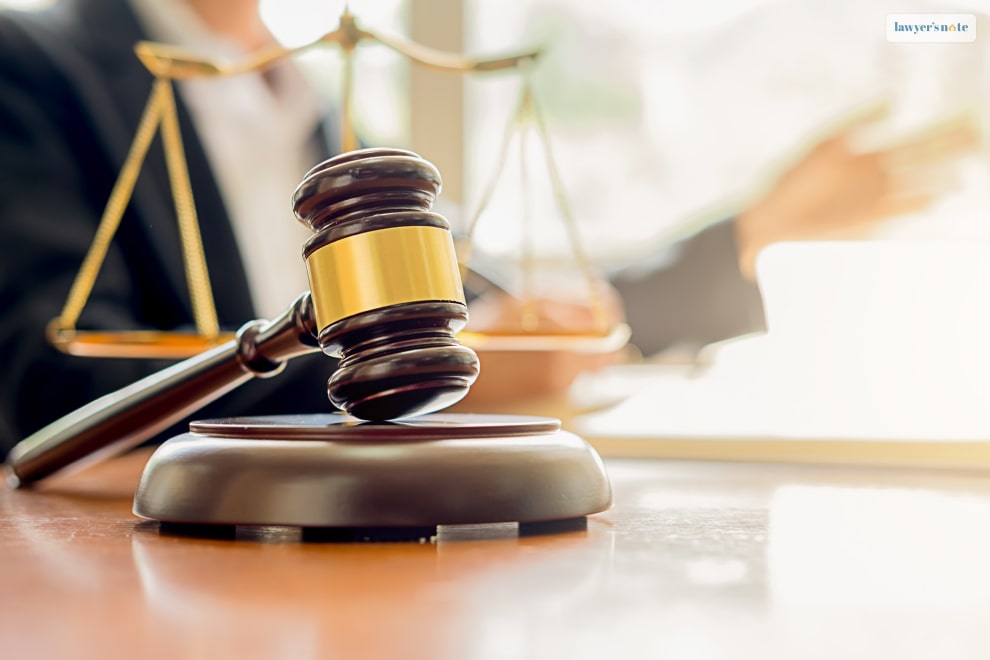Bus Accident Attorneys: Essential Tips for Victim Representation
As bus accident attorneys, we have undergone a series of bitter experiences with the victims that are quite horrifying. After....
1361 Views

You have widely heard about the term juvenile justice in television series or movies.
In this article, we will be discussing the juvenile justice system within the US.

The juvenile justice system in the United States is like a separate realm within the broader legal landscape. It deals with young individuals who find themselves on the wrong side of the law. Let’s peel back the layers of this system and understand how it works.
The juvenile justice system is a specialized legal framework designed to address the unique needs and circumstances of young individuals, typically under the age of 18, who are involved in criminal activities. It operates separately from the adult criminal justice system.
Moreover, it has its own set of laws, procedures, and objectives.

One fundamental principle of the juvenile justice system is rehabilitation.
Moreover, Instead of primarily focusing on punishment, the system aims to provide guidance, support, and resources to help young offenders reintegrate into society as responsible and law-abiding citizens.

The intake officer assesses the situation and determines the appropriate course of action.
In some cases, rather than going through formal court proceedings, juveniles may be eligible for diversion programs.
Moreover, These programs offer educational, counseling, or community service options as alternatives to prosecution.
If a case proceeds to court, the juvenile may appear before a judge. Unlike adult court, there is no jury in the juvenile system. Moreover, The judge considers the evidence and circumstances and makes a determination.
At this stage, the court determines the appropriate intervention.
Moreover, which could include probation, counseling, community service, or placement in a juvenile facility.

The juvenile justice system offers a range of rehabilitation options:
Many juveniles are placed on probation, which involves regular check-ins with a probation officer, adherence to certain rules, and participation in rehabilitation programs.
Mental health counseling and therapy services are often part of rehabilitation plans to address underlying issues that may have contributed to the delinquent behavior.
For more serious offenses or when a minor is considered a threat to themselves or others, placement in a secure juvenile facility may be required.
Moreover, Access to education and skill-building programs is a crucial component of rehabilitation.
Juveniles may be required to perform community service to make amends for their actions and contribute positively to society.

The juvenile justice system in the United States has a distinctive approach to punishment for young offenders. It prioritizes rehabilitation over retribution, recognizing the potential for growth and change in these individuals.
Let’s take a closer look at the range of punishments a juvenile might face.
Probation is a common form of punishment for juveniles who commit non-violent offenses. It involves regular check-ins with a probation officer, adherence to specific rules and curfews, and participation in rehabilitation programs. Moreover, The goal is to provide structure, guidance, and support to help the juvenile reintegrate into society.
Many juveniles facing delinquency charges benefit from mental health counseling and therapy services. These interventions aim to address underlying issues such as trauma, substance abuse, or behavioral disorders. Moreover, By addressing these factors, the system aims to reduce the likelihood of reoffending.
Community service is a form of restorative justice. Moreover, This serves a dual purpose: it holds the juvenile accountable while contributing positively to the community.
Access to education and skill-building programs is a critical component of rehabilitation for juvenile offenders. Moreover, By providing educational opportunities and teaching practical skills, the system aims to equip these individuals for a brighter future.
These facilities provide a structured environment with counseling, education, and therapeutic services.
In some cases, juveniles may be held in juvenile detention centers for a temporary period, typically while awaiting adjudication or disposition of their case. Moreover, The focus is on rehabilitation rather than punishment.
This not only holds them accountable but also compensates those who have suffered losses.
Unlike adult criminal records, juvenile court records are often treated differently. Moreover, In many cases, they can be sealed or expunged to provide a fresh start for young offenders once they complete their rehabilitation.
This typically occurs for serious offenses and after careful consideration by the court.
It’s important to note that the focus of the juvenile justice system is on rehabilitation and providing young offenders with an opportunity to learn from their mistakes and grow into responsible, law-abiding adults. Moreover, The goal is to balance accountability with the belief in the potential for change and personal growth.

Hey there! If you’ve ever wondered about the rights of juveniles in the United States, you’re in the right place. Juveniles, or individuals under the age of 18, have their own set of rights and protections under the law.
Let’s dive into the world of juvenile rights, demystify the process, and empower young lives with knowledge.
First and foremost, juveniles have the right to due process, just like adults. Moreover, They have the right to legal representation, a fair trial, and the opportunity to present evidence in their defense.
Juveniles, just like anyone else, have the right to remain silent. Moreover, This is a fundamental right that protects them from self-incrimination.
Juveniles have the right to an attorney. If they cannot afford one, the court will appoint a public defender to represent them. Moreover, Having a legal advocate by their side can make a world of difference in their case.
No one likes to be in legal limbo, and that includes juveniles. Moreover, They have the right to a speedy trial.
Moreover, This means they don’t have to testify against themselves.
If a juvenile is found guilty, they have the right to appeal the decision. Moreover, This allows for a fresh look at their case by a higher court to ensure that justice is served.
The goal of the juvenile justice system is rehabilitation, not punishment. Moreover, This approach recognizes that young individuals may still have the potential for growth and change.
Juveniles have the right to an education, even if they are in a juvenile detention center. Moreover, This ensures that their growth and development continue, even while they are in the system.
This protects a juvenile’s privacy and allows them to move forward without the stigma of their past mistakes.
The justice system must ensure that their punishment is proportionate to their offense and not excessive.
The juvenile justice system is a restorative system. Moreover, That is aimed at restoring the lives of at-risk youth residing within the United States.
This is because it is a common notion that when youth are provided with the right opportunities and privileges. Moreover, they will eventually lead a constructive life.
Moreover, The notion that children are not naturally evil or violent is the primary aim of the juvenile justice system.
So, we can state that the juvenile system exists in the United States. It is for the purpose of providing good life opportunities to youths.
Read More:

As bus accident attorneys, we have undergone a series of bitter experiences with the victims that are quite horrifying. After....

It’s important to keep a steady and ironclad relationship with your suppliers. It helps you to reach your business in....
By LawyersNote
08 May 2024
One of the significant challenges in the legal field is the matter that requires proving legal malpractice. Proving a legal....
By LawyersNote
08 May 2024